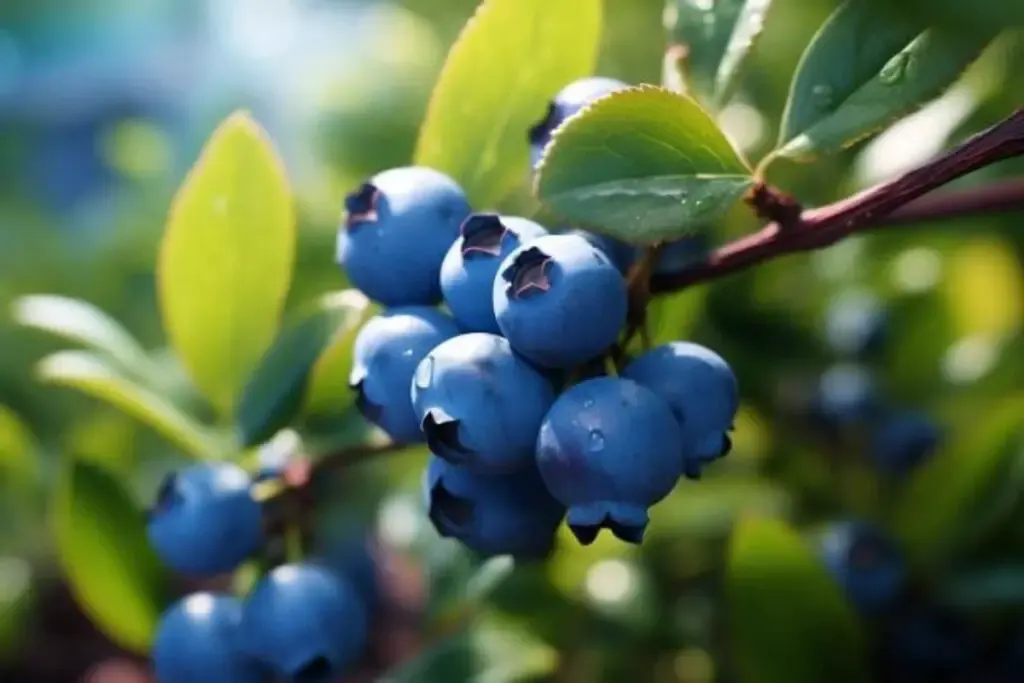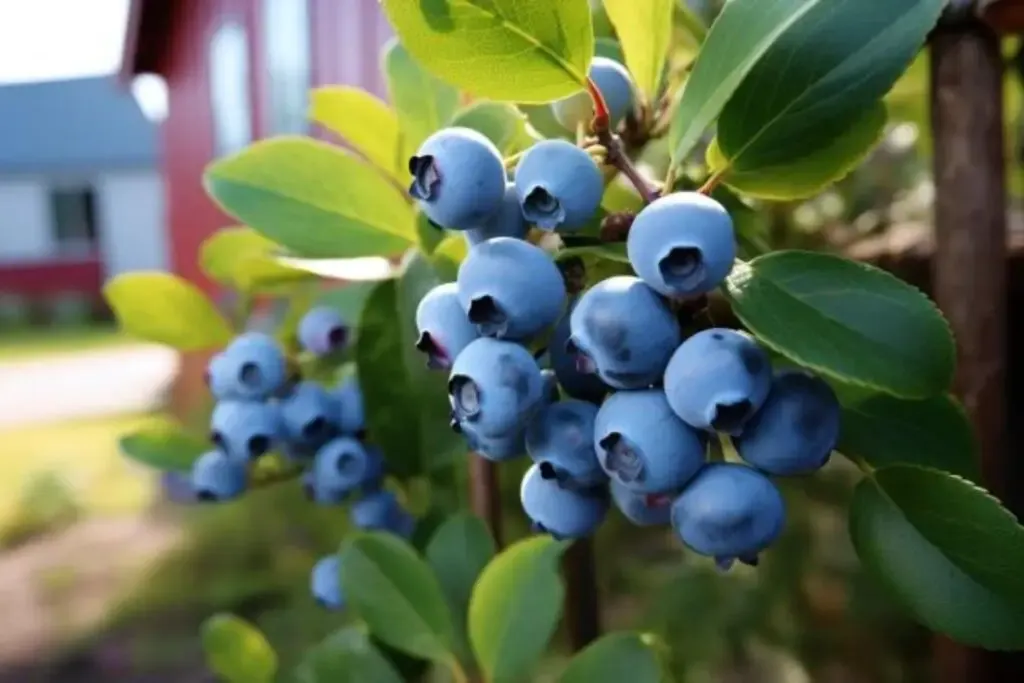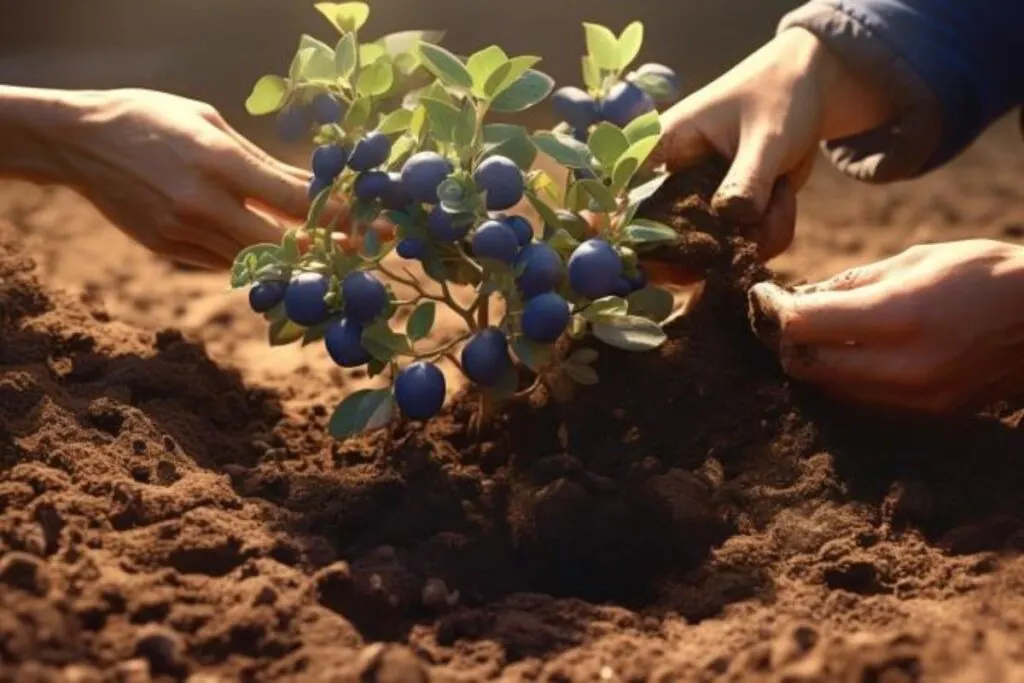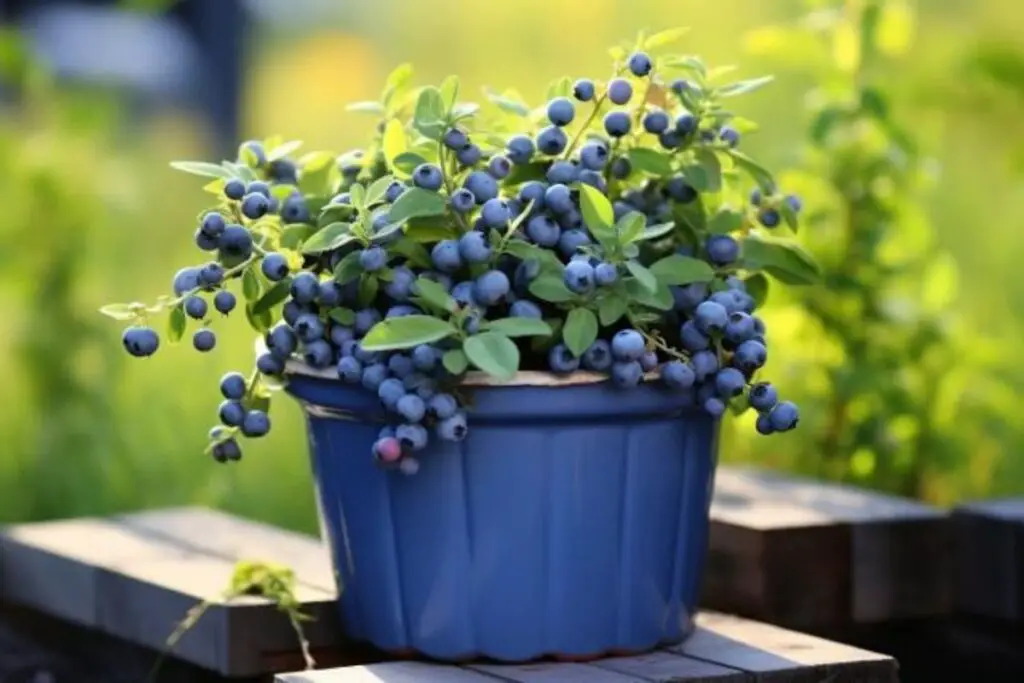Growing blueberries in your own garden is a delightful and rewarding experience that brings a blend of beauty, taste, and health to your backyard.
These charming berry bushes not only provide a bountiful harvest of delicious fruits but also add a splash of vibrant color to your garden landscape.
As a gardening enthusiast, I’m thrilled to share the joys and tips of cultivating blueberries, a fruit that is as nutritious as it is delightful to grow.
Benefits of Growing Blueberries

1. Health Powerhouse
Blueberries are famously rich in antioxidants, vitamins, and dietary fiber, making them incredibly beneficial for health.
Growing them at home means you’ll have a fresh, organic supply of one of the world’s healthiest foods.
2. Landscape Beauty
Blueberry plants are not only productive but also aesthetically pleasing. With their delicate white or pink flowers in spring and fiery red foliage in fall, they add a stunning visual appeal to any garden.
3. Easy to Maintain
Despite their delicate appearance, blueberry bushes are surprisingly hardy and easy to care for.
Once established, they require minimal maintenance, making them ideal for busy gardeners or those new to fruit gardening.
My Favorite Blueberry Varieties
Selecting the right blueberry variety can greatly influence your gardening experience and the quality of your harvest. Each variety has its own unique characteristics in terms of flavor, size, and climate adaptability.
Here are three blueberry varieties that I find particularly rewarding to grow:
1. Northern Highbush (e.g., ‘Bluecrop’, ‘Patriot’)

This is one of the most widely planted types of blueberries. Varieties like ‘Bluecrop’ and ‘Patriot’ are known for their large, juicy berries and robust flavor.
They thrive in regions with cooler winters and are perfect for gardeners in northern climates.
2. Southern Highbush (e.g., ‘Legacy’, ‘Sunshine Blue’)

These varieties are great for warmer climates as they require less chilling time to produce fruit.
‘Legacy’ offers a consistent yield of sweet berries, while ‘Sunshine Blue’ is compact and ideal for smaller spaces or container gardening.
3. Rabbiteye (e.g., ‘Tifblue’, ‘Brightwell’)

Rabbiteye blueberries are well-suited for southern gardens. They’re heat-tolerant and produce abundantly in regions with hot, humid summers.
‘Tifblue’ and ‘Brightwell’ are popular choices for their large, flavorful berries and good disease resistance.
Blueberry Care
Proper care is crucial to ensure your blueberry plants thrive and produce bountiful, tasty fruits. Let’s delve into the key aspects of blueberry care, from planting to fertilization.
Planting

When planting blueberries, timing and technique matter. Early spring is the best time to plant, as the risk of frost has diminished and the soil is workable.
Choose a sunny spot with well-drained, acidic soil. If planting multiple bushes, space them about 4-6 feet apart to allow for growth and air circulation.
Plant the bushes at the same depth as their container, and water them thoroughly after planting to settle the soil.
Light
Blueberries require full sun to produce the best fruit. Aim to provide them with at least 6-8 hours of direct sunlight per day.
A sunny location not only boosts fruit production but also helps maintain plant health.
Soil
Soil acidity is crucial for blueberries. They thrive in acidic soil with a pH of 4.5 to 5.5. If your soil isn’t naturally acidic, you can amend it with sulfur or use a soil acidified.
The soil should also be rich in organic matter and well-draining to prevent waterlogging.
Water
Consistent watering is essential for blueberries, especially during their growth and fruiting phases. They prefer moist, but not saturated, soil.
Ensure they receive about 1 to 2 inches of water per week. Using mulch can help retain soil moisture and regulate temperature.
Temperature and Humidity
Blueberries are relatively adaptable to different temperatures, but they grow best in temperate climates.
They can tolerate a range of humidity levels, though good air circulation around the plants helps prevent fungal diseases.
Fertilizer
Use a fertilizer formulated for acid-loving plants, applying it in early spring and again in late spring or early summer.
Avoid over-fertilizing, as too much can damage the plants. It’s also advisable to conduct a soil test before fertilizing to determine the specific needs of your soil.
Harvesting Blueberries
Harvesting blueberries is a delightful and rewarding task that marks the peak of your gardening efforts. Blueberries are ready to harvest when they turn a deep blue color and are easily plucked from the bush without any resistance.
It’s important to wait until they are fully ripe, as blueberries do not continue to ripen after being picked. Harvesting typically begins in late spring or early summer and can continue into late summer, depending on the variety and local climate.
Gently roll the berries between your thumb and the palm of your hand, allowing the ripe berries to fall into your hand.
Pruning
Pruning is an essential part of maintaining healthy blueberry bushes and ensuring a good harvest. The best time to prune is late winter or early spring before new growth begins.
Remove any dead or damaged branches, as well as any that are low to the ground, to encourage air circulation.
Prune out older, less productive canes to stimulate the growth of new, more fruitful ones. Proper pruning helps to manage the shape of the bush, improve berry quality, and prolong the life of the plant.
Propagating
Blueberries are most commonly propagated through softwood cuttings, layering, or division. For cuttings, take new growth in the late spring or early summer and root them in a moist, well-draining soil mix.
Layering involves bending a low-growing branch down to the ground and covering part of it with soil until it roots, then cutting it from the main plant.
Division involves separating an established plant into smaller segments, each with its own root system.
How to Grow Blueberries From Seed
Growing blueberries from seed is a longer process but can be rewarding. To start, stratify the seeds by placing them in the freezer for about 90 days to mimic winter conditions.
After stratification, sow the seeds in a soil mix designed for acid-loving plants and keep them at 60-70°F. Germination can take several weeks to a few months.
Once the seedlings are large enough, transplant them into individual pots and care for them until they are ready to be planted outside.
Growing in Pots

Blueberries can thrive in pots if you don’t have space for an in-ground garden. Choose a pot that is at least 18-24 inches in diameter and use a soil mix designed for acid-loving plants.
Ensure the pot has adequate drainage. Potted blueberries will need more frequent watering than those in the ground and may require more regular fertilization.
Place the pot in a location that receives full sun for the best fruit production.
Overwintering
Overwintering blueberries is an important aspect of their care, especially in colder climates. Blueberry bushes are generally hardy, but they can benefit from some extra protection during the winter months.
After the first frost, apply a thick layer of mulch around the base of the plants to insulate the roots and protect them from freezing temperatures.
In regions with severe winters, consider using burlap or a frost blanket to cover the plants, which can be removed when the threat of the last frost has passed in the spring.
Transplanting
Transplanting blueberries should be done with care to minimize stress on the plants. The best time to transplant blueberries is during the dormant season, in late fall or early spring.
When moving a blueberry bush, dig up as much of the root ball as possible and replant it at the same depth it was growing previously.
Water thoroughly after transplanting and keep the soil consistently moist until the plant is well-established in its new location.
Common Pests & Diseases
Blueberries can be susceptible to several pests and diseases. Common pests include birds, which can be deterred with netting, and insects like aphids and blueberry maggots.
Diseases such as powdery mildew, root rot, and leaf spot can also affect blueberry bushes. To prevent these, ensure good air circulation, proper watering, and clean up any fallen debris around the plants.
If pests or diseases do occur, use appropriate organic or chemical treatments as needed. Growing blueberries is a journey filled with moments of learning, nurturing, and of course, the sweet reward of fresh, delicious berries.
Whether you’re enjoying a handful of berries straight off the bush or incorporating them into your favorite recipes, the joy of growing your own blueberries is unmatched.
Happy blueberry gardening!

